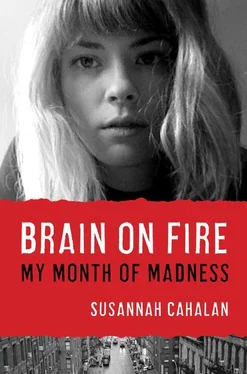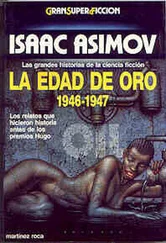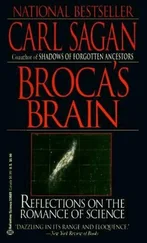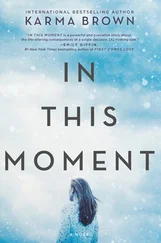Therefore I will likely never forget the time I could age the psychiatrist with my mind, which just shows how fallible memory is. This realization would continue to haunt me.
For instance, I recall with absolute certainty the time I woke up bound by restraints in the hospital’s four-person AMU room, watched over by the “purple lady,” the scene that opens this book. I vividly remember looking down at my right hand and seeing an orange band that read FLIGHT RISK. My family and friends remembered the same thing, so I took this for granted as a truth. The FLIGHT RISK band to me is a fact.
Yet it turns out it was imaginary. When I spoke to nurses and doctors on my floor, they told me that those bands don’t exist. One nurse suggested, “You probably had a FALL RISK band. It wasn’t orange; it was yellow.” My EEG tapes confirmed this. There is no such thing as an orange FLIGHT RISK band.
“When people think about a past event, they can incorporate new information in their recollection, making a new memory,” explained psychologist Elizabeth Loftus. Dr. Loftus has spent a lifetime working on the assumption that memory is often inaccurate. 66In a 1978 study, now presented in most Psych 101 classes, Dr. Loftus showed participants slides of a red car hitting a pedestrian. Although the photographs established that the car had encountered a stop sign, when Dr. Loftus questioned the subject, she inserted intentionally misleading questions, like, “What color was the yield sign?” The study showed that subjects given leading information were more likely to answer incorrectly than those who weren’t. These findings have challenged the power of eyewitness testimony.
A team of New York–based neuroscientists in 2000 demonstrated this assumption in lab rats by testing to see if memories are constantly altered each time we recall them. 67The team uncovered another step in the memory process, called reconsolidation: when a memory is recalled, it’s essentially remade, allowing new (and sometimes wrong) information to filter in. This is normally useful because we need to be able to update our past experiences to reflect present information, but it sometimes creates devious inaccuracies.
Psychology professor Dr. Henry Roedigger calls what happened with the FLIGHT RISK band a form of social contagion: If one person remembers incorrectly and shares this with others, it can spread, like an airborne illness straight out of the movie Outbreak.
Did I harbor this false memory? Was I the one who spread it? I am sure I remember vividly seeing the words FLIGHT RISK on my arm. Or am I?
“Our brains make little stories,” explained Dr. Chris Morrison, the neuropsychologist who had tested me at the hospital, when I interviewed her in December 2010. “It’s possible that when you rehearse things so many times, you start to internalize and believe that you were there. You integrate fragments, scenes of things that you could not truly remember.” Like the FLIGHT RISK band.
Similarly, a retrieval mechanism is triggered in the brain when we see something recognizable. Smells or images will instantly transport us back in time, unlocking forgotten memories. A year after I left the hospital, my friend Colleen took me to a nearby pub called Egan’s.
The name jarred me. Had I been there before? I couldn’t remember.
We walked into the upscale Irish pub and headed toward the bar. Nope. I hadn’t been there. But when I stepped into the central dining room area and caught sight of a magnificent low-hanging chandelier, I knew I had been here before, right before I got sick, with Stephen, his sister, and her husband before that Ryan Adams show. Not only did I remember being here, but I also remembered what I ordered: fish and chips.
Glistening lard. Piles of gluttonously rich, fat-encrusted french fries. I fought the urge to throw up on the table. I tried to make conversation, but all I could concentrate on was the glistening fish and chips.
I couldn’t believe how vividly it came rushing back to me. What else had I forgotten? What else would come back, knocking me off balance and reminding me how tenuous my grip on reality was?
Almost every day, something reemerges. It can be something insignificant, like the moss-colored socks at the hospital, or a simple word, like the time in the drugstore when I saw a box of Colace, the stool softener I had taken at the hospital, and the memories of Nurse Adeline came rushing in with it. During these moments, I can’t help but think that the other Susannah is calling out to me as if to say, I may be gone, but I’m not forgotten. Like the girl in the video: “Please.”
But with every memory I recapture, I know there are hundreds, thousands even, that I cannot conjure up. No matter how many doctors I speak with, no matter how many interviews I conduct or how many notebooks I scavenge, there will be many experiences, bits of my life that have vanished.
One morning, a year after I moved in with Stephen, I finally got around to unpacking boxes from my old apartment. I opened a small box filled with an old, broken hair dryer, some curling irons, a few notebooks, and a small brown paper bag. Inside the paper bag was a postcard of a raven-haired woman. It was a famous painting, and I knew I had seen it before, but it held no context for me:
The woman stands majestically in profile, which exaggerates her downward-sloping nose and long forehead. Her pale skin contrasts sharply against the blackness of her evening dress, which leaves her shoulders bare, only two jeweled straps holding the dress in place. She supports her unnatural pose by leaning the weight of her body on the tips of her right fingers, which are propped against a wooden table; her other hand lifts the hem of her skirt in a queenly fashion. It’s a seductive and artificial pose. To me, she looks at once both haughty and sick, as if too arrogant to admit that she is deathly ill.
There was something oddly magnetic about this woman, so different from the entirely alien push-and-pull mixture of attraction and repulsion that I felt with Dr. Bailey’s distorted version of a human form, that Carota picture. Taking in this woman, an ancient feeling surged through me, a prickly, exhilarating sensation that I could trace to my childhood. After a moment, I found the source: I had the same feeling when I used to snoop through my mom’s closet when I was a child. I stared at the picture for several more minutes, trying to understand the link between the picture and that forgotten memory, before I could pry myself away long enough to turn the postcard over.
It was John Singer Sargent’s Madame X, from 1884. Also in the bag was a receipt for the date of purchase. I had bought the $1.63 postcard at the Metropolitan Museum of Art on February 17, 2009, shortly before my first breakdown at work. There was not one shred, one iota, one shard of memory that connected me with that museum visit. I could not recall going to the Met that February day. I could not remember standing in front of the painting or what had originally engrossed me about this powerful yet vulnerable woman.
Or maybe on some level, I can remember. I like to believe what Friedrich Nietzsche said: “The existence of forgetting has never been proved: we only know that some things do not come to our mind when we want them to.”
Maybe it’s not gone but is somewhere in the recesses of my mind, waiting for the proper cues to be called back up. So far that hasn’t happened, which just makes me wonder: What else have I lost along the way? And is it actually lost or just hidden?
Some buried feeling unites me fiercely with that painting. I have since mounted it on the wall above me in the room where I write, and often I find myself staring off at it when I’m lost in thought. Maybe, even though “I” was not there to experience it for the first time, some part of me nevertheless was present during that museum visit, and maybe for that entire lost month. That idea comforts me.
Читать дальше












